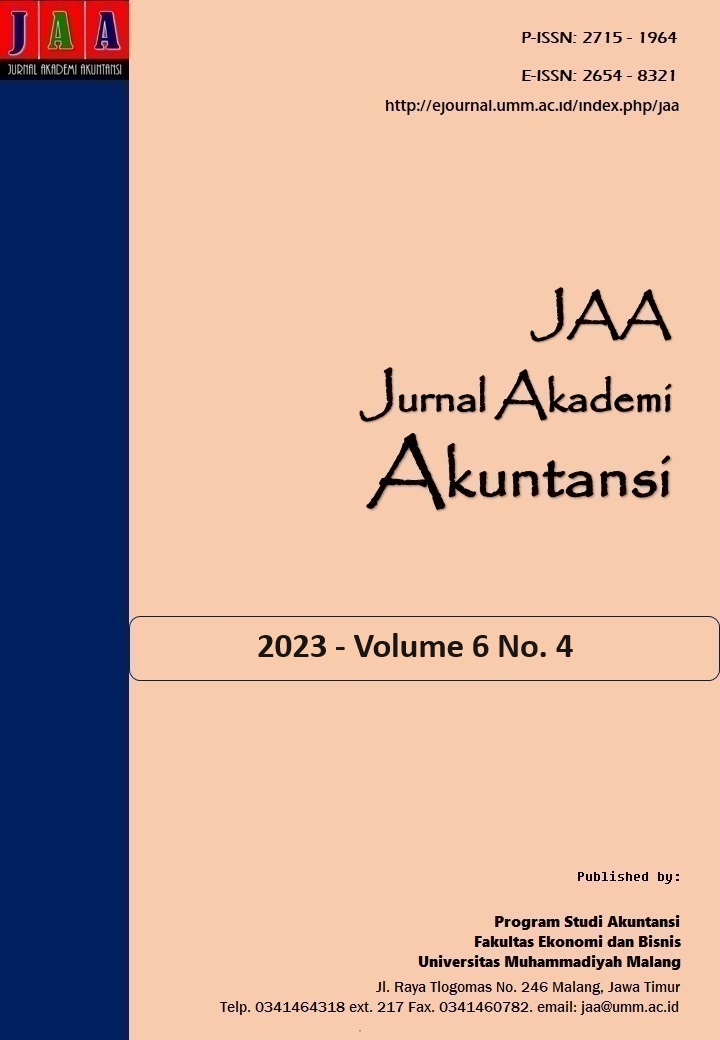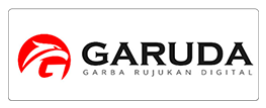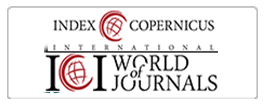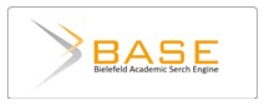Determinasi Teori Fraud Hexagon dan Karakteristik Komite Audit dalam Mendeteksi Kecurangan Laporan Keuangan
DOI:
https://doi.org/10.22219/jaa.v6i4.28180Keywords:
Audit Committee Characteristics, Financial Statement, Fraud Detection, Fraud HexagonAbstract
Purpose: This study aims to determine the influence of elements from the fraud hexagon theory and characteristics of audit committees on detecting financial statement fraud.
Methodology/approach: The study data uses secondary data sourced from annual reports of manufacturing companies in the basic and chemical industry sebsectors listed on the IDX for 2019-2022 period.
Findings: This study resulted in findings that pressure has a positive effect and opportunity has a negative effect on financial statement fraud. Rationalization, capability, arrogance, collusion and two characteristics of audit committee, namely financial expertise and frequency of audit committee meetings has no effect on financial statement fraud.
Practical and Theoretical contribution/Originality: These findings contribute to researchers and business managers in increasing understanding of the factors that lead to fraud through the hexagon fraud model an characteristics of audit committees, so as to reduce frequency and amount of losses due to fraud. Novelty this study is to use the independent variable characteristics of audit committee, namely financial expertise and frequency of meetings on detecting financial statement fraud.
Research Limitation: The independent variables in this study are only 31.6% which affect the detection of financial statement fraud. While the remaining 68.4% is influenced by other variables outside this research model. In addition, this study also cannot be generalized because only one sub-sector of the company is examined.
Downloads
References
Abbott, L. J., Park, Y., & Parker, S. (2000). The Effects of Audit Committee Activity and Independence on Corporate Fraud. Managerial Finance, 26.
Abdullah, W. N., & Said, R. (2019). The Association Between Audit Committee Characteristics, the Contracting Process and Fraudulent Financial Reporting. Journal of Financial Crime, 26(1), 223-234. https://doi.org/10.1108/JFC-11-2017-0116
ACFE. (2022). Occupational Fraud 2022: A Report to the nations.
Achmad, T., Ghozali, I., Helmina, M. R. A., Hapsari, D. I., & Pamungkas, I. D. (2022). Detecting Fraudulent Financial Reporting Using the Fraud Hexagon Model: Evidence from the Banking Sector in Indonesia. Economies, 11(1), 5. https://doi.org/10.3390/economies11010005
AICPA. (2002). Consideration of Fraud in a Financial Statement Audit. In (pp. 167-218).
Albrecht, W. S., Albrecht, C. O., Albrecht, C. C., & Zimbelman, M. F. (2012). Fraud Examination (Fourth ed.). Cengange Learning.
Alfarago, D., Mabrur, A., & Syukur, M. (2023). The Likelihood Of Fraud From The Fraud Hexagon Perspective: Evidence From Indonesia. ABAC Journal, 43(1), 34-51. https://www.researchgate.net/publication/367404088
Arens, A.A., Elder, R.J., and Beasley, M.S. (2012). "Auditing and Assurance Service: An Integrated Approach". 14th Edition. Pearson Education Limited. Edinburg UK.
Beasley, M. S., Carcello, J. V., Hermanson, D. R., & Lapides, P. D. (2000). Fraudulent Financial Reporting: Consideration of Industry Traits and Corporate Governance Mechanisms. 14(4).
Beneish, M. D. (1997). Detecting GAAP Violation: Implications for Assessing Earnings Management among Firms with Extreme Financial Performance. Journal of Accounting and Public Policy, 16(3), 271-309. https://doi.org/10.1016/S0278-4254(97)00023-9
Beneish, M. D. (1999). The Detection of Earnings Manipulation. Financial Analysts Journal, 55(5), 24-36. https://doi.org/10.2469/faj.v55.n5.2296
Deloitte. (2021). Decoding frauds in the manufacturing sector Detect. Respond. Prevent. Https://Www2.Deloitte.Com/Sk/En/Pages/Forensic/Articles/Decoding-Frauds-in-the-Manufacturing-Sector.Html.
Demetriades, P., & Owusu-Agyei, S. (2022). Fraudulent financial reporting: an application of fraud diamond to Toshiba’s accounting scandal. Journal of Financial Crime, 29(2), 729-763. https://doi.org/10.1108/JFC-05-2021-0108
Farber, D. B. (2005). Retoring Trust After Fraud: Does Corporate Governance Matter? The Accounting Review, 80(2), 539-561. https://www.jstor.org/stable/4093068 (American Accounting Association)
Indarto, S. L., & Ghozali, I. (2016). Fraud Diamond: Detection Analysis On The Fraudulent Financial Reporting. Risk Governance & Control: Financial Markets & Institutions, 6(4).
Jaswadi, J., Purnomo, H., & Sumiadji, S. (2022). Financial statement fraud in Indonesia: a longitudinal study of financial misstatement in the pre- and post-establishment of financial services authority. Journal of Financial Reporting and Accounting. https://doi.org/10.1108/JFRA-10-2021-0336
Jensen, M. C., & Meckling, W. H. (1976). Theory of the Firm: Managerial Behavior, Agency Costs and Ownership Structure. Journal of Financial Economics, 3(4), 305-360. https://doi.org/10.1016/0304-405X(76)90026-X
Kazemian, S., Said, J., Nia, E. H., & Vakilifard, H. (2019). Examining fraud risk factors on asset misappropriation: evidence from the Iranian banking industry. Journal of Financial Crime, 26(2), 447-463. https://doi.org/10.1108/JFC-01-2018-0008
Khamainy, A. H., Ali, M., & Setiawan, M. A. (2022). Detecting financial statement fraud through new fraud diamond model: the case of Indonesia. Journal of Financial Crime, 29(3), 925-941. https://doi.org/10.1108/JFC-06-2021-0118
Kukreja, G., Gupta, S. M., Sare, A., & Kumaraswamy, S. (2020). Beneish M-score and Altman Z-score as a catalyst for corporate fraud detection. Journal of Investment Compliance, 21(4), 231-241. https://doi.org/10.1108/joic-09-2020-0022
Lou, Y.-I., & Wang, M.-L. (2011). Fraud Risk Factor Of The Fraud Triangle Assessing The Likelihood Of Fraudulent Financial Reporting. Journal of Business & Economics Research, 7(2), 61-78. https://doi.org/10.19030/jber.v7i2.2262
McLaughlin, C., Armstrong, S., Moustafa, M. W., & Elamer, A. A. (2021). Audit committee diversity and corporate scandals: evidence from the UK. International Journal of Accounting & Information Research, 29(5), 734-763. https://doi.org/10.1108/IJAIM-01-2021-0024
Nasir, N. A. B. M., Ali, M. J., & Ahmed, K. (2019). Corporate governance, board ethnicity and financial statement fraud: evidence from Malaysia. Accounting Research Journal, 32(3), 514-531. https://doi.org/10.1108/ARJ-02-2018-0024
Omukaga, K. O. (2021). Is the fraud diamond perspective valid in Kenya? Journal of Financial Crime, 28(3), 810-840. https://doi.org/10.1108/JFC-11-2019-0141
Osazuwa, N. P., Che-Ahmad, A., & Che-Adam, N. (2016). Political Connection, Board Characteristics and Firm Performance in Nigeria. International Soft Science Conference, 769-774. https://doi.org/10.15405/epsbs.2016.08.108
Owens-Jackson, L. A., Robinson, D., & Shelton, S. W. (2009). The Association Between Audit Committee Characteristics, the Contracting Process and Fraudulent Financial Reporting. American Journal of Business, 24(1).
Owusu, G. M. Y., Koomson, T. A. A., Alipoe, S. A., & Kani, Y. A. (2021). Examining the predictors of fraud in state-owned enterprises: an application of the fraud triangle theory. journal of Money Laundering, 25(2), 427-444. https://doi.org/10.1108/JMLC-05-2021-0053
Putra, W. M. (2019). Analysis of Financial Fraud Using The Fraud Diamond Model with Corporate Governance as The Moderating Variable. Advances in Economics, Business and Management Research, 102(Icaf), 163-169. https://doi.org/10.2991/icaf-19.2019.27
Rahman, M. J., & Xu, J. (2022). Fraud detection using fraud triangle theory: evidence from China. Journal of Financial Crime. https://doi.org/10.1108/JFC-09-2022-0219
Rengganis, E. M. Y. D., Sari, M. M. R., Budiasih, I. G. A., Wirajaya, I. G. A., & Suprasto, H. B. (2019). The Fraud Diamond: Element in Detecting Financial Statement of Fraud. International Research Journal of Management, IT & Social Sciences, Vol. 6 No. 3, 1-10. https://doi.org/10.21744/irjmis.v6n3.621
Rimadanti, S., Sulistyawati, A. I., & Santoso, A. (2022). The Role of Pentagon Fraud in Detecting Fraudulent Financial Statements. Golden Ratio of Finance Management, 2(2). https://doi.org/10.52970/grfm.v2i2.185
Sari, M. P., Mahardika, E., Suryandari, D., & Raharja, S. (2022). The audit committee as moderating the effect of hexagon’s fraud on fraudulent financial statements in mining companies listed on the Indonesia stock exchange. Cogent Business and Management, 9(11). https://doi.org/10.1080/23311975.2022.2150118
Singleton, T. W., & Singleton, A. J. (2010). Fraud Auditing and Forensic Accounting. (Fourth Edition). John Wiley & Sons, Inc.
Skousen, C. J., Smith, K. R., & Wright, C. J. (2009). Detecting And Predicting Financial Statement Fraud: The Effectiveness Of The Fraud Traingle And SAS No. 99 Advances in Financial Economics, 13(99), 53-81. https://doi.org/10.1108/S1569-3732(2009)0000013005
Umar, H., & Purba, R. (2020). Fraud Diamond Analysis In Detecting Fraudulent Financial Report. International Journal of Scientific & Technology Research, 9(03), 6638-6646.
Vousinas, G. (2019). Advancing theory of fraud: the S.C.O.R.E. model. Journal of Financial Crime, 26(1), 372-381. https://doi.org/10.1108/JFC-12-2017-0128
Wolfe, D. T., & Hermanson, D. R. (2004). The Fraud Diamond: Considering the Four Elements of Fraud. The CPA Journal, 1-5. https://digitalcommons.kennesaw.edu/facpubs
Zakaria, K. M., Anuar, N., & Salin, A. S. A. P. (2016). Internal controls and fraud empirical evidence from oil and gas company. Journal of Financial Crime, 23(4), 1154-1168. https://doi.org/10.1108/JFC-04-2016-0021
Downloads
Published
Issue
Section
License
Copyright (c) 2023 Astri Hardirmaningrum, Abdul Rohman

This work is licensed under a Creative Commons Attribution-NonCommercial-ShareAlike 4.0 International License.
Jurnal Akademi Akuntansi is licensed under a Creative Commons Attribution-NonCommercial-ShareAlike 4.0 International License.
Authors who publish with this journal agree to the following terms:
- Authors retain copyright and grant the journal right of first publication with the work simultaneously licensed under a Creative Commons Attribution-NonCommercial-ShareAlike 4.0 International License that allows others to share the work with an acknowledgment of the work's authorship and initial publication in this journal.
- Authors are able to enter into separate, additional contractual arrangements for the non-exclusive distribution of the journal's published version of the work (e.g., post it to an institutional repository or publish it in a book), with an acknowledgment of its initial publication in this journal.
- Authors are permitted and encouraged to post their work online (e.g., in institutional repositories or on their website) prior to and during the submission process, as it can lead to productive exchanges, as well as earlier and greater citation of published work (See The Effect of Open Access).
Jurnal Akademi Akuntansi dilisensikan di bawah lisensi Creative Commons Attribution-NonCommercial-ShareAlike 4.0 International.
Penulis yang menerbitkan artikel di jurnal ini menyetujui ketentuan berikut:
- Penulis mempertahankan hak cipta dan memberikan hak jurnal atas publikasi pertama dengan karya yang secara serentak dilisensikan di bawah Lisensi Pengaitan Creative Commons yang memungkinkan orang lain untuk berbagi karya dengan pengakuan atas karya penulis dan publikasi awal dalam jurnal ini.
- Penulis dapat masuk ke dalam pengaturan kontrak tambahan yang terpisah untuk distribusi non-eksklusif versi karya jurnal yang diterbitkan (misalnya, mempostingnya ke repositori institusional atau mempublikasikannya dalam sebuah buku), dengan pengakuan publikasi awalnya di jurnal ini.
- Penulis diizinkan dan didorong untuk memposting pekerjaan mereka secara online (misalnya, di repositori institusional atau di situs web mereka) sebelum dan selama proses pengajuan, karena dapat mengarah pada pertukaran produktif, serta kutipan pekerjaan sebelumnya dan yang lebih besar (Lihat Pengaruh Akses Terbuka).
























